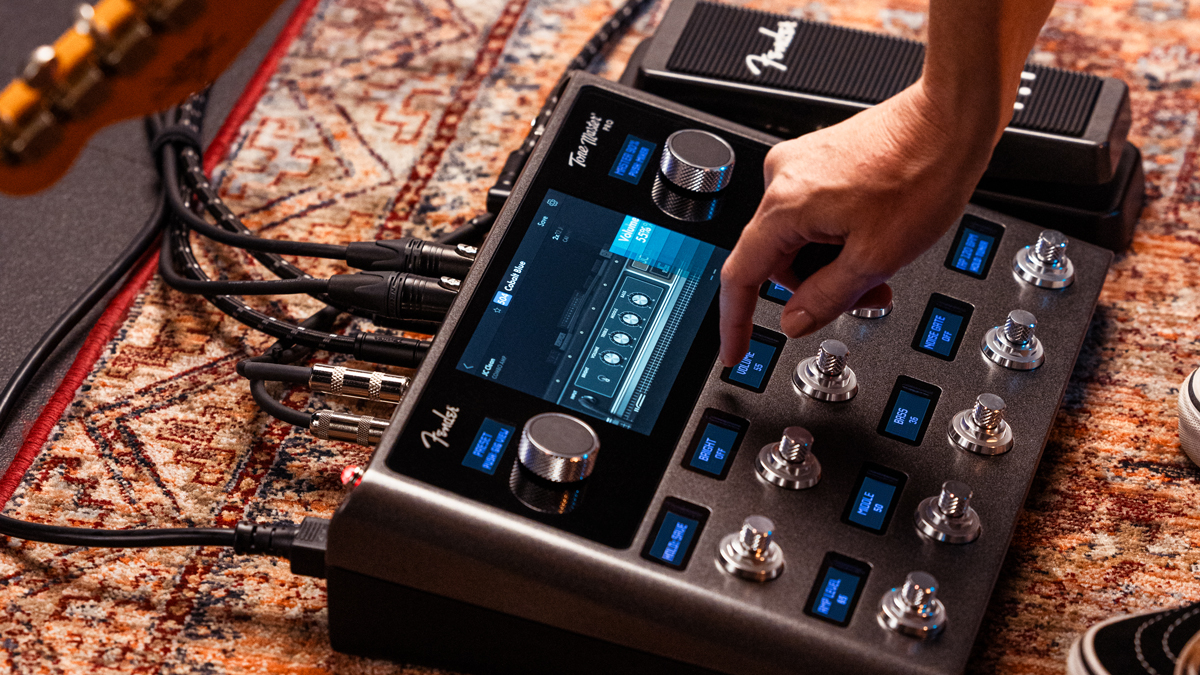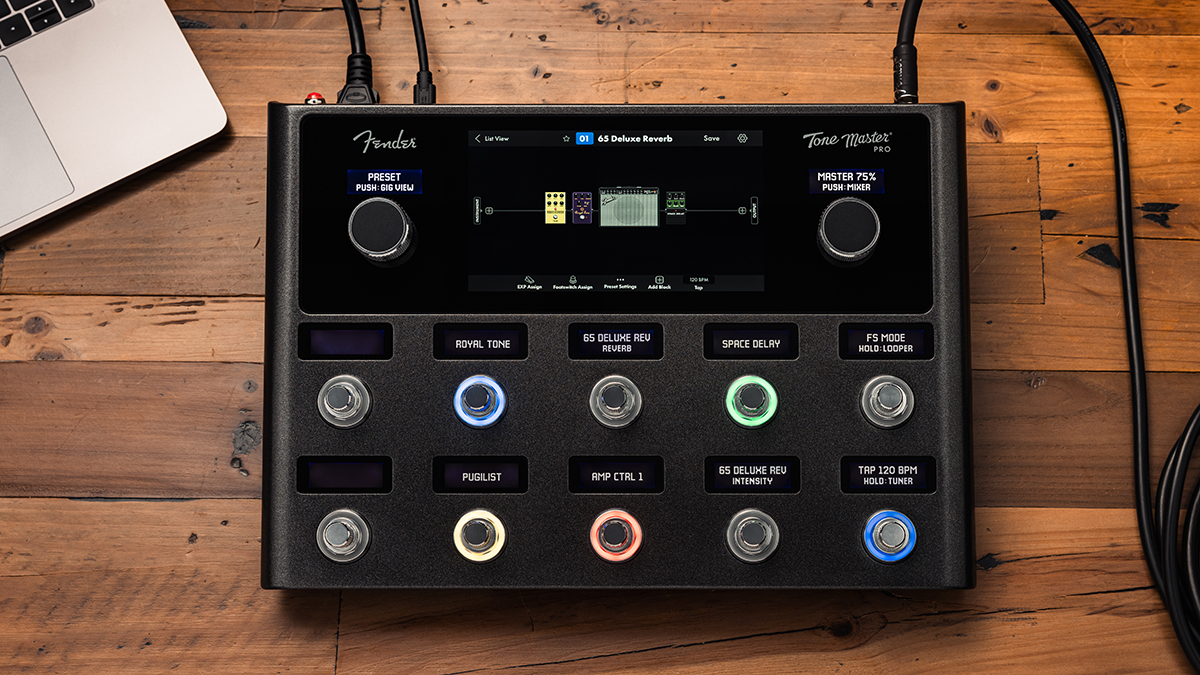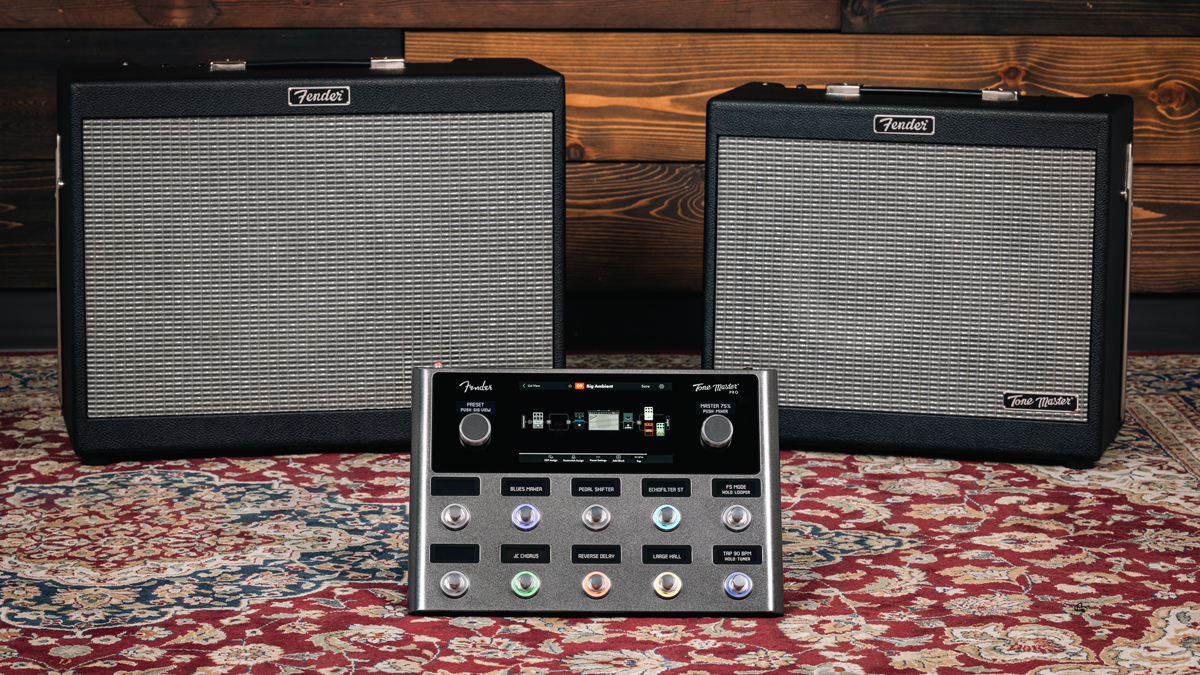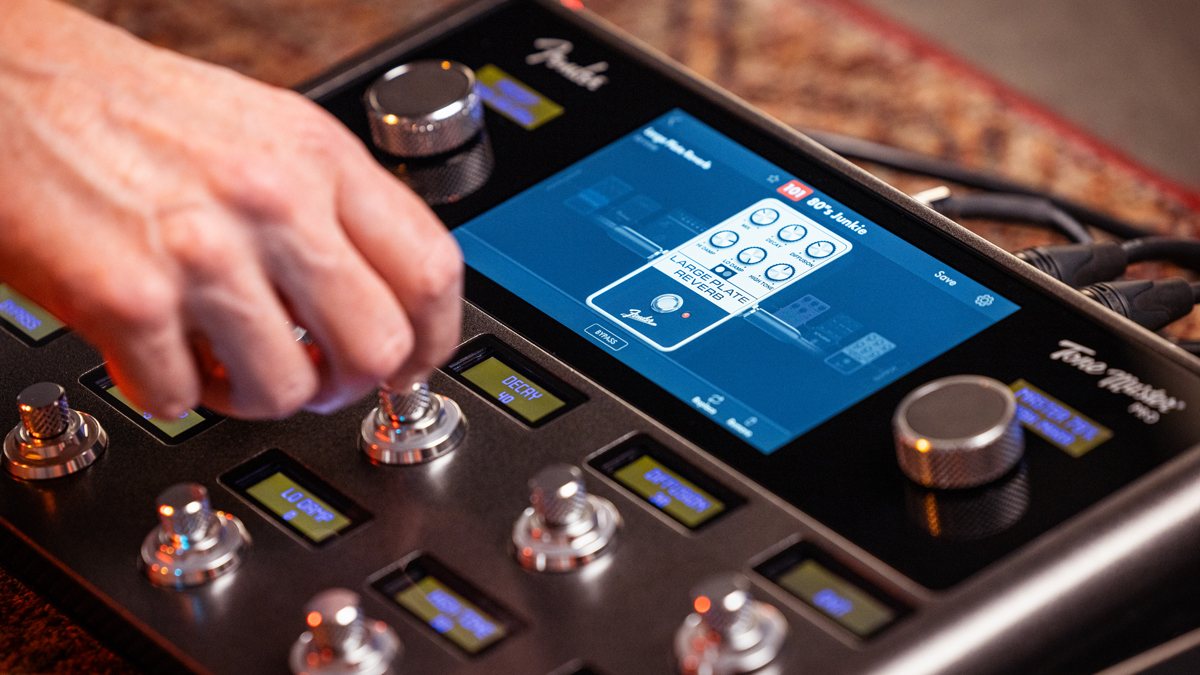I lived with the Fender Tone Master Pro for two weeks, and forget the tones – the way it feels is the real game-changer
These days, we take the tones for granted – the look and feel of modelers is the new battleground, and Fender is at the head of the pack

The Fender Tone Master Pro arrived last week to considerable fanfare – marking a huge new stride into the high-end amp modeler and multi-effects market from the biggest guitar brand in the world. But, although it sounds great, the tones aren’t the headline.
Modeling units have, for several years, been indistinguishable from the real thing. I've tested every one that's hit the market, and until the late 2010s, sound quality increased in leaps and bounds. Now we're at a point where the only improvements are marginal.
This has been the case even longer outside of the home or studio. Click back through our archive of interviews – from the mid-2010s, touring bands of all sizes have used modeling units in their rigs.
Sure, their primary goal is consistency and convenience, night after night, and that's true. Still, if their large audiences don't notice, then it's doubtful smaller ones will.
And to be clear: when I say modeling units, I mean modelers, amp sims, floor boards, DAW emulations, IRs. Manufacturers often seem pedantic about these distinctions, but players don't care about the names or terminology. The only thing that matters is "can it replace my amp?"
So if it's no longer about sound and processing power, what sets apart the high-end modelers of today? Simple: the User Interface.

A new benchmark
You've heard of ergonomics, the "how and why" of a human interacting with a system. On a modeler, the User Interface (UI) is the sum total of "how" you do a thing you want to, like switch mode, turn off a pedal, build a patch, and so on.
Get The Pick Newsletter
All the latest guitar news, interviews, lessons, reviews, deals and more, direct to your inbox!
Previously, our benchmark UI was the Line 6 Helix. A great, full-color screen with knobs directly below to interact intuitively with the screen above. No manual required. Even the HX Effects, without a screen, was easy to navigate because of the knob layout.
Now the Fender Tone Master Pro has taken that crown. Like all good UI, there’s an elegant simplicity to it – using a hardware control layout of two large knobs, as well as an actually-responsive touch screen. Before this, usually you got one or the other, not both working seamlessly together.
Early touchscreen units went all-in on the touchscreen itself, selling it as the holy grail of interactions. Yet some paired the screen with a dull, confusing visual layout meaning it went to waste. Worse, some had a mediocre touchscreen that was slow and unresponsive.
Other elements on the Tone Master are just as well thought-out. If you want to avoid the screen, the rotating footswitch dials make tweaking parameters a breeze.
Then there's the fact that the colors around the footswitches reflect the models they engage. For example, a switch assigned to a Tube Screamer-style overdrive might have a green ring around it.
Meanwhile, the large button to switch into footswitch mode for the idiot – I mean, reviewer – in a hurry is great. It boggles the mind that some pedals ship without a mode like this as the default, or at least easily accessible.

See a thing, press a thing
All of human-computer interaction hinges around "see a thing, press a thing, get a response". Without this feedback loop, the user will throw up their hands and put their shiny new toy on eBay.
Having a tight feedback loop is important. When you try to turn a knob using a touchscreen, it should move at the speed your finger does, and register the touch smoothly. When you set out to add an additional block to a patch – a reverb, let's say – you want to be auditioning those as soon as possible.
The bottom line is that players raised on physical amps expect good feedback as a bare minimum. What the Tone Master brings to the table is feel
When I turn a knob on a real Fender amp, I get instant feedback. If I rip a pedal off my 'board and plug a new one in, I hear the difference straight away. 10 years ago, asking for this tactility and feedback in a software model would have been fanciful, entitled even. Today, that's the definition of great.
The bottom line is that players raised on physical amps expect good feedback as a bare minimum. What the Tone Master brings to the table is feel. It’s a powerful, compact gigging system that feels easy to operate.
Thanks to the accompanying FRFR cab and UI, it looks good, and even has some of the physical tactility of a real amp. And this is just the start: if Fender starts issuing some alternative cab coverings, it’s going to set itself further apart from the pack.
The Tone Master Pro might be the modeler that finally converts a wave of digital holdouts to the tech. The fact this is coming under the Fender banner is no small thing in the eyes of those players, but if either the look and UI were done badly, this wouldn't be possible.

The price of success
Of course, there's one area other than UI that differentiates high-end modeling units: cost.
The most expensive modelers are the same price as a boutique or vintage amp. And, even coming from Fender, the mass market kingpin, the Tone Master is, sadly, no exception to the rule.
These projects take years of R&D, testing and development – and that comes at a price.
Even so, the number of times a manufacturer has missed the price mark by one or two hundred dollars is startling. There's still so much room for sub-$500 and sub-$1,000 slam-dunks, and so little room for anything above that.
On the Tone Master, I’ve seen prices of around $2,400 for the floorboard and 12" cab, or $2,200 with the 10" cab. $1,999 would have been a game changer, but maybe margins simply won't allow it.
Hopefully that will change down the line and, given the investment behind it, Fender appears to be in it for the long haul, suggesting that it’s not this iteration that cracks the hold-outs, it could well be one from the same stable.
Finally, while I've got your attention, Fender, do the FRFR cabs in pastel tolex. Please?
Alex Lynham is a gear obsessive who's been collecting and building modern and vintage equipment since he got his first Saturday job. Besides reviewing countless pedals for Total Guitar, he's written guides on how to build your first pedal, how to build a tube amp from a kit, and briefly went viral when he released a glitch delay pedal, the Atom Smasher.
"Brilliantly precise monitoring headphones with wide open-back sound": Audio-Technica ATH-R70XA review
“We’ve painstakingly restored Les Paul’s original gear”: The Les Paul Recording Studio opens in Hollywood – bringing the innovator’s revolutionary gear to a whole new generation of musicians











